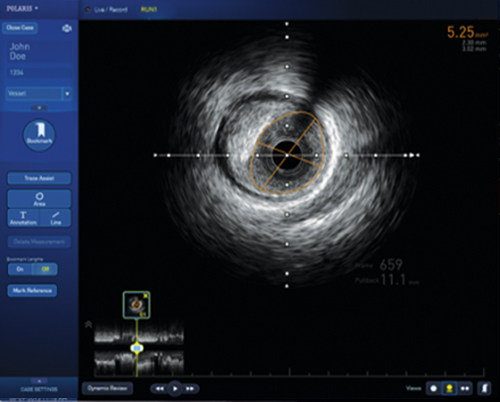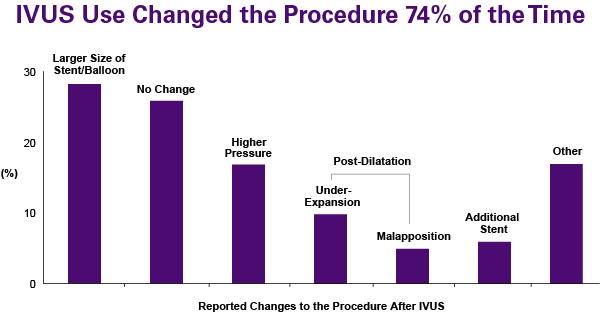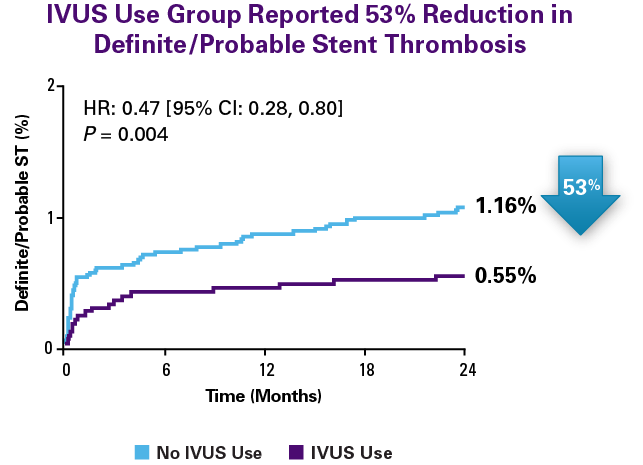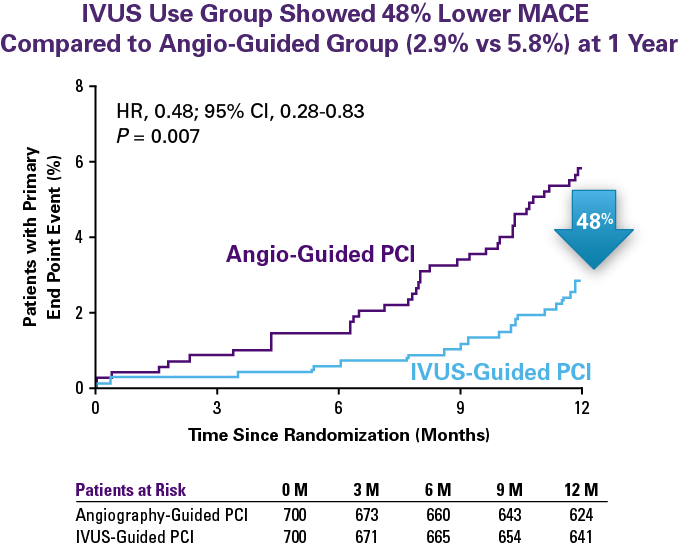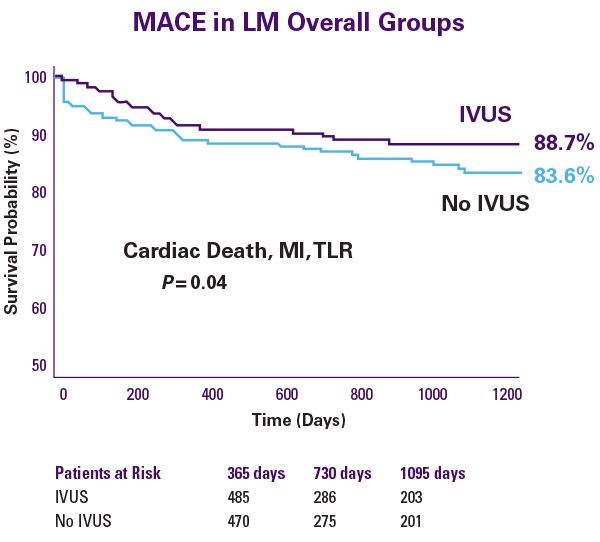POLARIS
Multi-Modality Guidance System
What are the Benefits of IVUS?
ADAPT-DES Study Reported Improved Outcomes with IVUS Use1
The study goal was to evaluate outcomes in patients undergoing PCI with IVUS use versus no IVUS use. The ADAPT-DES study is the largest prospective, non-randomized, multicenter study to date with 8,582 patients enrolled with no exclusion criteria (IVUS arm = 3,361 patients, Angiographic arm = 5,221 patients).
2-Year Results Overview
IVUS guidance lead to the use of larger stents or balloons, more post-dilatation, additional stents, or higher pressures in 74% of patients – resulting in lower rates of ST, MI, and TLR.
- IVUS use group reported a significant reduction in MI (38%), ST (53%), MACE (35%), and TLR (20%)
- IVUS use was identified as an independent predictor of lower ST incidence
IVUS-XPL Randomized Clinical Trial2
The study goal was to determine whether the long-term clinical outcomes with IVUS-guided DES implantation are superior to those with angiography-guided implantation in patients with long coronary lesions (≥ 28 mm). The IVUS-XPL Study is the largest randomized, multi-center clinical trial for IVUS-guided vs. angio-guided stenting to date.
Results Overview:
- IVUS group showed 48% lower MACE compared to angio-guided group (2.9% vs. 5.8%) at 1-year
- Higher percentage of post dilatation in IVUS group (76% vs. 54%, P < 0.001)
- Larger MLA post PCI in IVUS group
IVUS Guidance in Left Main (LM) Lesions during PCI3 reported better outcomes in patients with LM disease undergoing revascularization with DES3
The study goal was to investigate the clinical impact of the use of IVUS during revascularization of patients with LM CAD using DES with drug-eluting stents (DES). The IVUS Guidance in Left Main Study pooled analysis of four registries involving 1,670 patients with LM disease. 505 patients who underwent IVUS-guided PCI compared to 505 propensity-matched patients where IVUS-guidance was not performed.
Results Overview
- MACE at 3-years was significantly lower in IVUS-guided group for both LM overall population (P = 0.04) and LM subgroups with distal lesions (P = 0.03)
- IVUS use was an independent predictor for fewer adverse events
- Further incremental benefit was shown in distal lesion subgroup receiving two stents
- Definite and Probable ST was significantly lower in the IVUS-guided group (P = 0.04)











